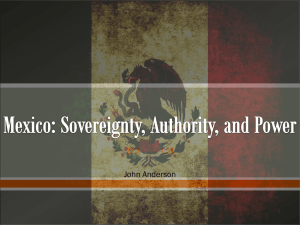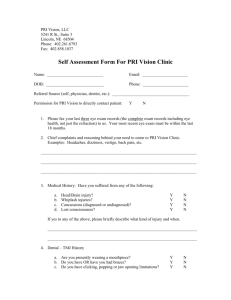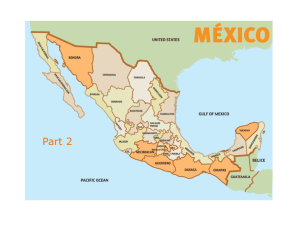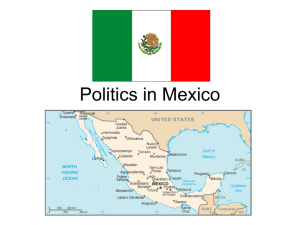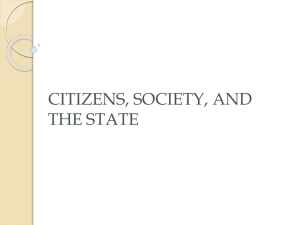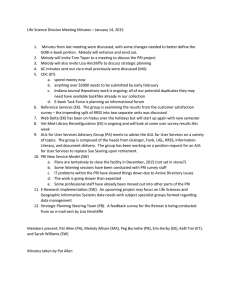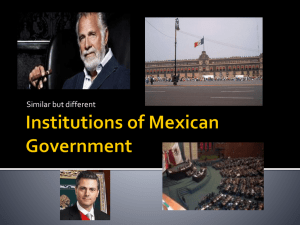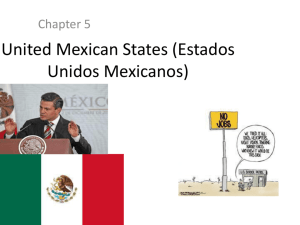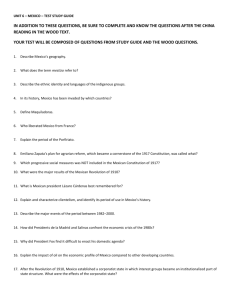Mexico History
advertisement
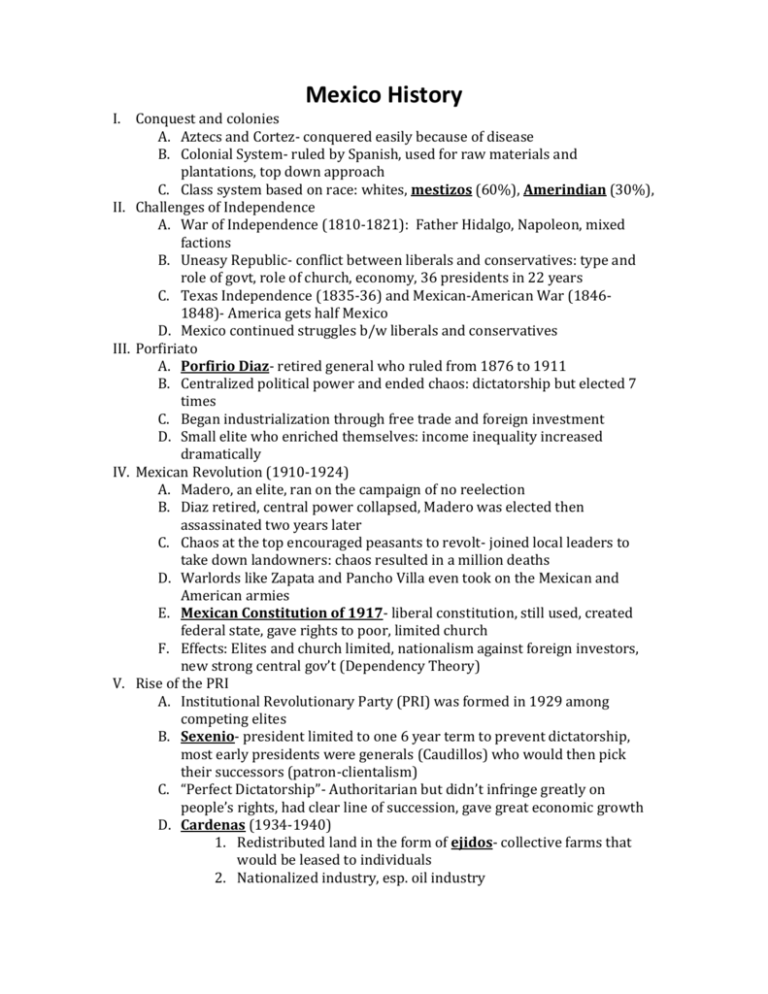
Mexico History I. Conquest and colonies A. Aztecs and Cortez- conquered easily because of disease B. Colonial System- ruled by Spanish, used for raw materials and plantations, top down approach C. Class system based on race: whites, mestizos (60%), Amerindian (30%), II. Challenges of Independence A. War of Independence (1810-1821): Father Hidalgo, Napoleon, mixed factions B. Uneasy Republic- conflict between liberals and conservatives: type and role of govt, role of church, economy, 36 presidents in 22 years C. Texas Independence (1835-36) and Mexican-American War (18461848)- America gets half Mexico D. Mexico continued struggles b/w liberals and conservatives III. Porfiriato A. Porfirio Diaz- retired general who ruled from 1876 to 1911 B. Centralized political power and ended chaos: dictatorship but elected 7 times C. Began industrialization through free trade and foreign investment D. Small elite who enriched themselves: income inequality increased dramatically IV. Mexican Revolution (1910-1924) A. Madero, an elite, ran on the campaign of no reelection B. Diaz retired, central power collapsed, Madero was elected then assassinated two years later C. Chaos at the top encouraged peasants to revolt- joined local leaders to take down landowners: chaos resulted in a million deaths D. Warlords like Zapata and Pancho Villa even took on the Mexican and American armies E. Mexican Constitution of 1917- liberal constitution, still used, created federal state, gave rights to poor, limited church F. Effects: Elites and church limited, nationalism against foreign investors, new strong central gov’t (Dependency Theory) V. Rise of the PRI A. Institutional Revolutionary Party (PRI) was formed in 1929 among competing elites B. Sexenio- president limited to one 6 year term to prevent dictatorship, most early presidents were generals (Caudillos) who would then pick their successors (patron-clientalism) C. “Perfect Dictatorship”- Authoritarian but didn’t infringe greatly on people’s rights, had clear line of succession, gave great economic growth D. Cardenas (1934-1940) 1. Redistributed land in the form of ejidos- collective farms that would be leased to individuals 2. Nationalized industry, esp. oil industry 3. Built a corporatist system based on the military, peasants, workers, and middle class VI. Mexican Miracle (1940-1970) A. Stability and government policy was able to achieve high growth and low inflation for three decades B. PRI kept a firm grip on society through its system of clientalism and promising economic growth C. Import substitution industrialization- develop national industry through protectionism (high tariffs to block foreign goods), state guidance, subsidies, and public investment D. Rapid urbanization and industrialism VII. Economic Changes A. Economic Crisis 1. Growth slowed down and the government became reliant on oil revenues to keep up spending 2. Oil prices crashed in late 1970s (at the time, 75% of Mexico’s exports) 3. Government responded by nationalizing banks 4. Peso was devalued several times B. Economic Liberalization 1. Presidents Madrid and Salinas began to open up the economy a. Decreased barriers, opened more free trade b. Decreased gov’t role in the economy (privatization, ending subsidies) and the power of unions 2. NAFTA- beginning of free trade w/US and Canada, different from a supranational organization, helped growth but unequal and more foreign influence 3. Economic collapse in 1994 and US bailout VIII. Political Changes A. Political Crisis 1. Challenges to PRI rule in 1968 Olympic Massacre (400 protesters killed) and 1985 Earthquake (tens of thousands killed with a poor PRI response) 2. Public outcry over leftists that were “disappeared” 3. In 1988, Calderas of the PRD almost won the election (fraud) 4. Fraud in 1994 election, assassination of PRI candidate 5. Zapatista Uprising- 1994, day NAFTA went into affect, leftist rebel indigenous group rose up in Chiapas, got more rights for Amerindians but showed divisions in society B. Political Liberalization 1. Changes in election laws helped create opposition parties, free state and local elections (more non-PRI governors, Mexico City elections) 2. Federal Electoral Institute (IFE)- independent NGO regulates elections, decreased fraud and corruption, public funding of elections 3. PRI lost majority of legislature in 1997, Zedillo did not pick a successor, 2000 was an open election 4. Vicente Fox (PAN) was the first non-PRI to win in 71 years
